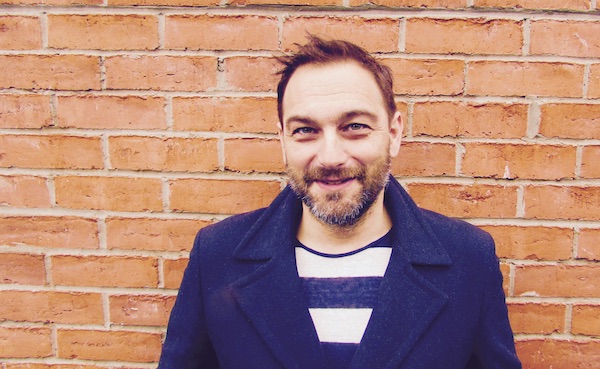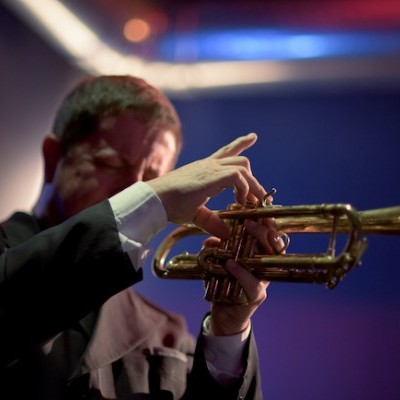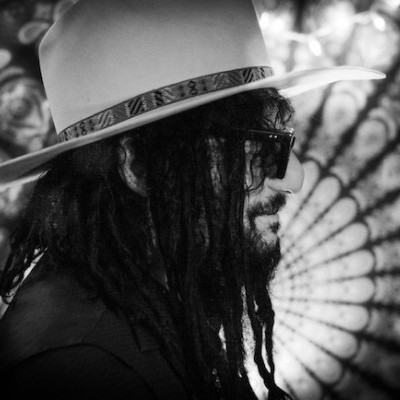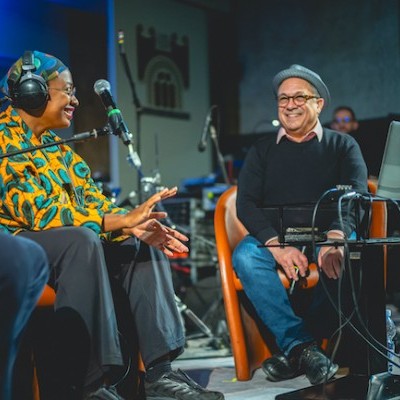Jul 9, 2024 11:35 AM
Trumpeter, Educator Jim Rotondi Dies at 61
Jim Rotondi, a renowned hard-bop trumpeter, composer and educator, died suddenly on July 7 at a hospital in France. He…

Even when guitarist and scholar José Dias is on stage, he’s doing research.
(Photo: Rita Castro)Throughout most of the aughts, José Dias worked as the director of a jazz school in Lisbon, Portugal’s bustling capital city. As he honed the curriculum, he got to thinking more generally about what exactly constitutes European jazz, not just on a musical or an aesthetic level, but also on a social and economic one. How do jazz musicians in Europe, that vast tapestry of history and culture, connect across borders? How do they create a functioning ecosystem in which jazz thrives?
“Europe has more than 40 countries and more than 55 languages, and somehow we manage to consider ourselves all European,” said Dias, a guitarist and author whose new book, Jazz in Europe, focuses on the idea of pan-European identity as viewed through a musical prism. “It’s interesting to see how it’s such a diverse ecology that produces so many different strands of jazz, but at the same time, we feel that we are part of the same thing—the same unity.”
With that in mind, it was something of a cruel reminder of Europe’s fractured past when Dias, 47, moved to England in 2016 to take a position as a senior lecturer in music at Manchester Metropolitan University. That was the year the majority of British voters decided, in a referendum, to withdraw from the European Union.
The vote was disappointing to the guitarist, to say the least. “Brexit is just a mess, a big mess,” Dias said during a Skype interview from Manchester, where he lives with his family. “It makes no sense.”
In a way, though, Dias’ path operates as a kind of refutation of Brexit, given that he is a native of Portugal now living in a working-class northern city where the Industrial Revolution was born. His music is also an implicit celebration of the idea of European unity. In Manchester, he performs with a trio that improvises to different films, choosing to focus only European directors.
“It’s subtle,” he said. “But it’s a way of resisting.”
Dias’ latest pair of albums—both released in 2019—are a reflection of his expansive and extra-musical approach to jazz. After Silence, Vol. 1 (Clean Feed), his solo album, is a series of muddy and abstract improvisations recorded while responding to the short films of Man Ray, much in the same way Miles Davis recorded the soundtrack to the 1958 French film Ascenseur Pour L’échafaud. (Dias said he was more inspired, however, by the cinematic approach taken by Ben Monder and Bill Frisell.) The other album, Live At SMUP (Escanifobético), made in Portugal, is Dias’ musical celebration of little-known characters from novels he likes, such as Lolita and Death in Venice.
In the coming months, Dias also will put out a book about jazz festivals and is planning to release a second volume of After Silence, on which his trio improvises to Fritz Lang films.
Dias picked up the guitar at 13 and was drawn to jazz when he listened to the 1985 album Sun City: Artists Against Apartheid, with a track featuring Herbie Hancock, Ron Carter, Miles Davis and Stanley Jordan, among others. “I found it really weird,” he said. “But I wanted to understand what was going on.”
Since then, he has worked to figure out what exactly is going on in the European jazz scene, combining his love of playing with his scholarly inclinations. “When I’m on stage,” he said, “I’m also researching.”
Dias said that he is particularly interested in jazz from Scandinavia—the “Nordic tone,” as he put it—but that the jazz scenes in Milan and Siena, in Italy, also have intrigued him. He described London’s celebrated jazz scene as a “bubble,” arguing that Manchester has its own unique free-jazz scene that is overshadowed by the capital.
Overall, though, he believes that Europe is too vast and complex to make generalizations about: “It’s so diverse that it’s impossible to put your finger in one spot and say, ‘This is where you should be.’” DB

Jim Rotondi was acclaimed for his wide, round trumpet tone, remarkable virtuosity and assured swing.
Jul 9, 2024 11:35 AM
Jim Rotondi, a renowned hard-bop trumpeter, composer and educator, died suddenly on July 7 at a hospital in France. He…

Charles Lloyd, seen here at the 2024 New Orleans Jazz & Heritage Festival, makes DownBeat Poll history!
Jul 11, 2024 12:23 PM
The incomparable Charles Lloyd swept the 72nd Annual DownBeat Critics Poll, becoming the first artist ever to earn…

“Being president of Blue Note has been one of the coolest things that ever happened to me,” Was said. “It’s a gas to serve as one of the caretakers of that legacy.”
Jun 4, 2024 12:21 PM
Sitting with Don Was is a comfortable and unhurried exercise. He may seem slightly reserved at first, but ideas and…

“She reminds me of my childhood and makes we want to cry,” Cécile McLorin Salvant, pictured here with writer Ashley Kahn, said of Dianne Reeves.
Jun 11, 2024 12:31 PM
Italy’s Umbria Jazz Winter is one of those rare annual festivals that not only coincides with a major holiday —…

Maria Schneider said of Decades, her new compilation release: “I just wanted to create something, put it in a beautiful box and say, ‘Look at what we did.‘”
Jun 18, 2024 12:00 PM
Maria Schneider opened the sleek black box and placed it on a coffee table in her Manhattan apartment. Inside lay the…